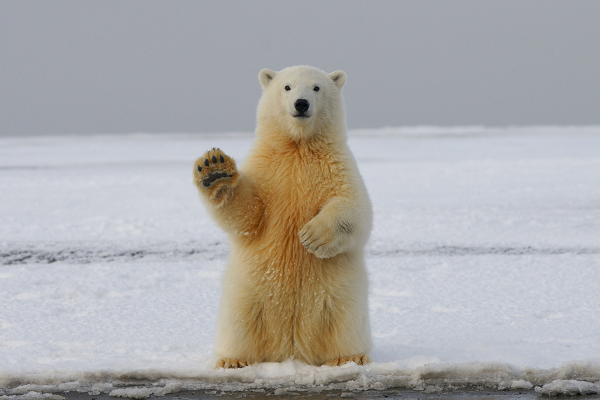A bear perched precariously on a bit of ice snapped climate Cult twigs that sent us spiraling into a period of OMG, Ice-Free Summers, the Polar Bears will go extinct – and YOU DID THIS. Did you do it in the Early Holocene for 1600 consecutive years, 11 700 years ago?
Not likely. So what gives? There were polar bears but no ice during the summer. If that’s true, then the decades of endangered polar bear rhetoric is a bunch of bear hookey. Not that we were never suspicious, everywhere, all the time. The Cult is good at only one thing. Making predictions that don’t come true. And while we enjoy exposing these systemic failures, we also like to buttress our positions with science.
New evidence indicates that Arctic areas with the thickest ice today probably melted out every year during the summer for about 1,600 years during the early Holocene (ca. 11.3-9.7k years ago), making the Arctic virtually ice-free.
The evidence comes from the linked report, “Seasonal sea-ice in the Arctic’s last ice area during the Early Holocene.”
Modeling studies suggest a transition from perennial to seasonal sea ice during the Early Holocene, a period of elevated global temperatures around 10,000 years ago. Here we show marine proxy evidence for the disappearance of perennial sea-ice in the southern Lincoln Sea during the Early Holocene, which suggests a widespread transition to seasonal sea-ice in the Arctic Ocean. Seasonal sea-ice conditions were tightly coupled to regional atmospheric temperatures.
It is worth noting that the linked research is very climate cult-friendly, with numerous references to anthropogenic warming. Under no circumstance was it intended to debunk the polar bear myth, but it must. The special with which we are familiar evolved about 10,000 years before the early Holocene.
Evidence from several sources indicates that the Eemian produced conditions even warmer than documented during the early Holocene and they lasted longer, as explained in the excellent summary by Leonid Polyak and colleagues (2010). During the early portion of the Eemian at least (ca. 130-120k years ago), summer temperatures were about 5–8 degrees Celsius warmer than today and the Arctic was virtually ice-free. At about 120k years ago, there is evidence from Finland and the Norwegian Sea off Norway that a cooling event lasting 500-1,000 years broke the long stretch of warmth (Helmens et al. 2015).
Not only did polar bear survive these two extended periods when ice-free summers prevailed, but the Eemian warm summers came only about 10,000 years after the bears arose as a unique species. This makes polar bear survival through the Eemian even more impressive than most scientists acknowledge. The polar bears’ ability to store excess energy as fat in the spring and metabolize it later when needed must have been fine-tuned by natural selection during this challlenging time (Crockford 2023).
Pro-Global-Warming-Rhetoric ice-melt “science” just disproved any threat declining ice represents to polar bears.
Nice work, “science.”
